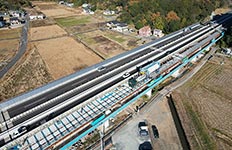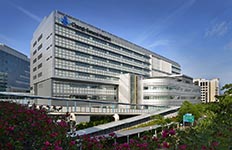Health Management Declaration
The Shimizu Group will provide an environment in which employees can be healthy and work energetically, and that will help improve the job satisfaction and happiness of all employees.
The Shimizu Group aims to be a company that advances each employee by ensuring that each employee can be healthy, work energetically, and demonstrate the skills they possess. To accomplish these things, we have established a company-wide structure for improving employee health and promoting improvements in the workplace environment, and continue to take the necessary steps. By pursuing these activities, we fulfill our corporate social responsibilities and improve the job satisfaction and happiness of every employee. This is health management in the Shimizu Group.
September 29, 2020
President and Director
Health management Promotion Structure
We have established a dedicated committee chaired by the president. This committee works to promote various measures and works together with the Human Resources Department, the clinic at the head office, the Health & Safety Committee, and the Health Insurance Association to establish measures and strengthen the system for managing and improving employee health.
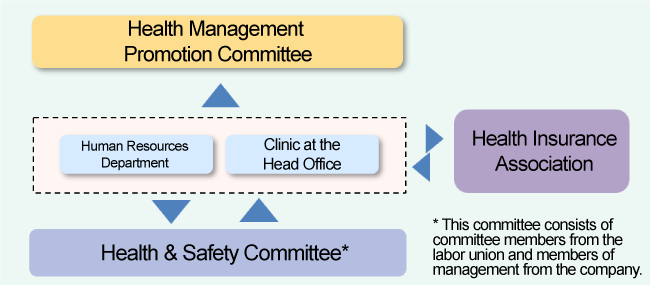

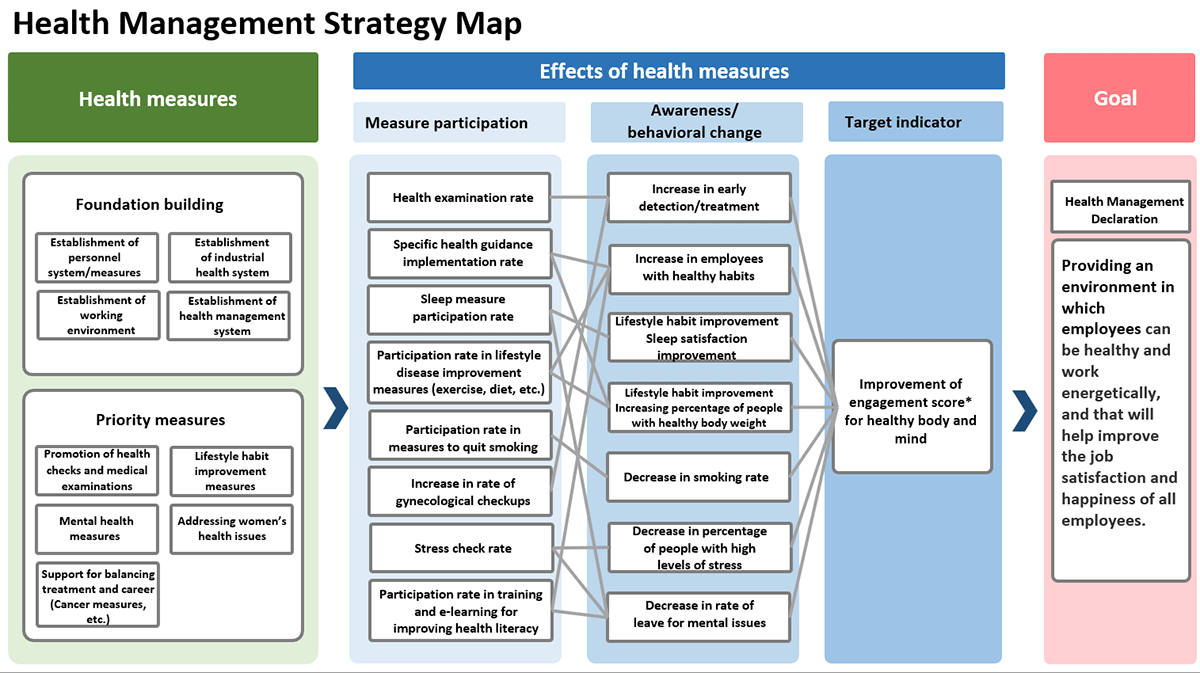
Engagement Score
・One of the non-financial KPIs set under the Mid-Term Management Plan (2024–2026), calculated as the average of six items rated on a five-point scale: three measuring job satisfaction and three measuring relationships.
・A survey was conducted for all employees, resulting in a score of 3.6 for FY2024 with a 92.9% response rate.
(Physical and mental health is one of the six items.)
Main Measures
Establish a clinic and staff it with occupational health professionals
Shimizu has established medical and dental clinics at the head office and prepared a system for preventing illness and disease in employees. The nine branches throughout Japan are also staffed with occupational healthcare professionals, and we work to create health throughout the company. We hold opinion exchanges among all occupational health staff members in Japan twice a year and strive to make further improvements to the health creation system.
| As of June, 2024 | As of June, 2025 | |
| Occupational physician |
|
|
| Contract physicians (internal medicine, orthopedics, ophthalmology, and dentistry) |
|
|
| Public health nurses, RNs, etc. |
|
|
| 臨床心理士 |
|
|
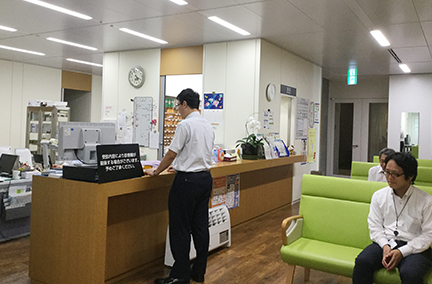

Mental Healthcare
To maintain the mental health of employees, Shimizu provides training on self-care to young employees and training on care of those in their line to those new to managerial positions. In addition to internal support, we are also building a counseling system that provides many kinds of support to employees, including establishing an external counseling hotline and maintaining a full-time clinical psychologist at the head office. For employees returning from long-term leave, we implement a return-to-work program in cooperation with the occupational physician and clinical psychologist to support a smooth return to the workplace.
Anti-smoking Measures
Since October 2021, we have enforced a no-smoking policy during working hours and removed all smoking areas at our domestic and international branches and offices, including the head office, to eliminate passive smoking. To support employees in quitting smoking, we offer smoking cessation consultations through the head office clinic and organize health initiatives aligned with World No Tobacco Day (May 31), including educational programs and cessation challenges.
Infectious Disease Prevention Measures
We take proactive measures to prevent seasonal influenza by offering on-site group vaccinations and subsidizing external vaccination costs. The Company fully covers vaccination costs for employees’ families and temporary staff as well.
In regions where our overseas offices are located, infectious diseases such as malaria, HIV/AIDS, tuberculosis, and dengue fever present significant health risks. As a global company, we address these challenges by providing pre-departure vaccinations, medical checkups by occupational physicians, and infection prevention guidance upon arrival to ensure the health and safety of our employees abroad.
Checking in with Employees Stationed Overseas
We are confirming the mental and physical health of employees stationed overseas by sending them a questionnaire three times a year. Public health nurses and occupational physicians are following up on the work environment, human relations, and other issues that are difficult to identify from a questionnaire through face-to-face meetings.
Creating Health Through the Cafeteria Menu
The cafeteria menu at the head office displays the calories, protein, fat, and salt content of menu items in an effort to improve employee health consciousness.

Conducting Health Exams
We mandate 100% participation in annual health checkups. For employees under 40, group checkups include lifestyle counseling by public health nurses and encouragement to undergo follow-up testing. In FY2024, the follow-up testing rate under head office jurisdiction reached 89.2%.
Employees aged 40 and older are eligible for fully subsidized comprehensive medical exams (as an alternative to regular checkups) and receive paid leave on the day of the exam to support early detection and prevention of serious illness.
For overseas employees unable to participate in group checkups, site representatives coordinate individual exams at local hospitals based on company-specified items.
We also promote awareness and subsidize screenings for female-specific health risks such as uterine and breast cancer, with screening rates in FY2024 reaching 55.9% and 82.6%, respectively.
Job Site Rounds
The occupational physician, public health nurse, and other occupational healthcare staff travel around to construction job sites and meet with employees.
Going to the job site, confirming the actual working conditions, and meeting with employees enables them to provide appropriate healthcare advice and leads to early detection of people who are in poor health.

Record on Measures
This is Shimizu’s record on health management measures.
| Category | FY2022 Results | FY2023 Results | FY2024 Results | |
|---|---|---|---|---|
| Percentage of employees who underwent regular health exams | 100% | 100% | 100% | |
| Percentage of employees who completed the stress check | 80.8% | 77.9% | 87.1% | |
| Overall health risk on the stress check | 84 | 81 | 82 | |
| Percentage of female employees screened for uterine cancer*1 (females age 20 and older) |
56.7% | 56.8% | 55.9% | |
| Percentage of female employees screened for breast cancer*1 (females age 40 and older) |
84.2% | 81.9% | 82.6% | |
| Percentage of employees who smoke |
|
|
|
|
| Smoking Cessation Challenge Results*2 | participants | 130 | 41 | 22 |
| Number of employees who successfully quit smoking | 31 | 22 | 8 | |
| Treatment persistence rate of high-risk patient | Blood pressure | 94.0% | 92.9% | 93.4% |
| Blood sugar | 92.9% | 92.4% | 92.1% | |
| Lipid | 77.3% | 78.1% | 80.6% | |
| Percentage of employee with health literacy*3 | 80.6% | 80.8% | 79.3% | |
| Percentage of obesity〔BMI 25 or more〕 (age 40 and older) |
38.7% | 38.6% | 39.5% | |
| Absenteeism due to injury or illness(Absenteeism)*4 | 0.5 days | 0.7 days | 0.7 days | |
| Work performance due to health problems(Presenteeism)*5 | 2.1% | 2.2% | 1.9% | |
| No. of people met with during job site rounds (job sites directly supervised by the head office) |
Occupational physician | 131 | 70 | 61 |
| Public health nurses | 1,246 | 1,259 | 1,525 | |
- The percentages of female employees screened for uterine and breast cancer are the percentages screened within the past two years.
- Annual investment in smoking cessation measures: Approximately 100,000–200,000 yen
- Percentage of employees who responded they were “willing to improve lifestyle” or were “already working on it” in the questionnaire at the time of their health exam.
- Average number of days used under sick leave system by all employees.
- Percentage of employees who responded “less than 50%” as the evaluation of their work for the past four weeks where the results they can normally achieve are set at 100%.


